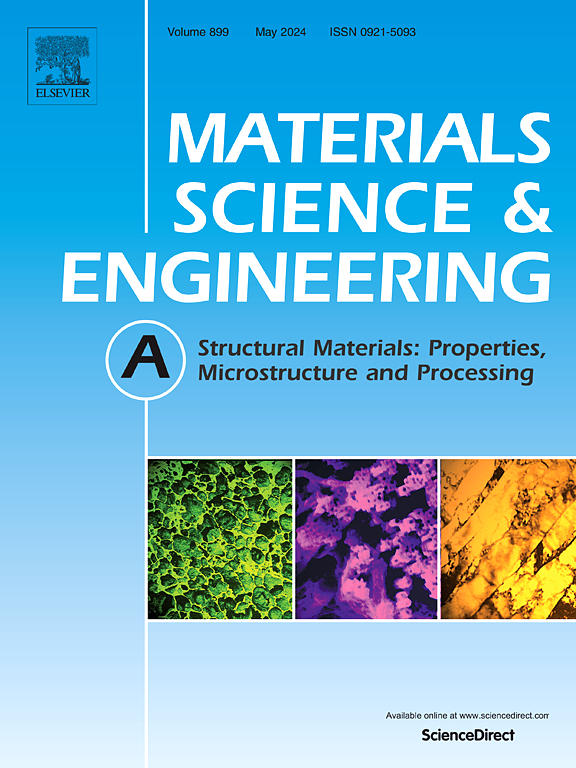Impacts of post-printing heat treatment on the microstructure and mechanical properties of wire-arc additively manufactured nickel aluminum bronze alloy
IF 6.1
2区 材料科学
Q1 MATERIALS SCIENCE, MULTIDISCIPLINARY
引用次数: 0
Abstract
Wire-arc additive manufacturing (WAAM) is an effective process for producing and repairing large-scale Nickel Aluminum Bronze (NAB) components, particularly within the marine defense and aerospace industries. This study investigates the impact of two post-printing heat treatments —direct aging and solutionizing followed by aging—on the microstructure and mechanical properties of WAAM-NAB alloy. The as-printed WAAM-NAB alloy (As-PNAB) shows a complex microstructure with large globular κII (Fe3Al) and lamellar κIII (NiAl) phases. Direct aging at 675 °C for 6 h (DA-NAB) and solutionizing at 950 °C for 2 h before aging (SA-NAB) result in a more uniform κ-phases distribution and the formation of needle-like κIV phases. DA-NAB yields smaller precipitates, while SA-NAB achieves a more homogenous microstructure with larger precipitates that remain smaller than those in As-PNAB. DA-NAB displays superior mechanical properties, with enhanced yield strength, ultimate tensile strength, and ductility compared to SA-NAB. DA-NAB was characterized by a more uniform grain structure with reduced dislocation density, contributing to its improved mechanical performance. Direct aging was identified as the most effective heat treatment for achieving a favorable balance of strength and ductility, outperforming the solutionizing and aging approach.
印后热处理对电弧增材制造镍铝青铜合金组织和力学性能的影响
电弧增材制造(WAAM)是生产和修复大型镍铝青铜(NAB)部件的有效工艺,特别是在海洋国防和航空航天工业中。研究了直接时效和固溶后时效两种印后热处理对WAAM-NAB合金组织和力学性能的影响。打印后的WAAM-NAB合金(As-PNAB)呈现出由大球状κII (Fe3Al)和片层状κIII (NiAl)相组成的复杂组织。675℃直接时效6 h (DA-NAB)和950℃固溶2 h (SA-NAB)时效后,合金的κ-相分布更加均匀,形成针状的κIV相。DA-NAB的析出相较小,而SA-NAB的微观结构更均匀,析出相较大,但仍比As-PNAB小。与SA-NAB相比,DA-NAB表现出优异的机械性能,具有增强的屈服强度、极限拉伸强度和延展性。DA-NAB具有更均匀的晶粒结构和更低的位错密度,从而提高了力学性能。直接时效被认为是实现强度和延展性良好平衡的最有效的热处理,优于固溶和时效方法。
本文章由计算机程序翻译,如有差异,请以英文原文为准。
求助全文
约1分钟内获得全文
求助全文
来源期刊

Materials Science and Engineering: A
工程技术-材料科学:综合
CiteScore
11.50
自引率
15.60%
发文量
1811
审稿时长
31 days
期刊介绍:
Materials Science and Engineering A provides an international medium for the publication of theoretical and experimental studies related to the load-bearing capacity of materials as influenced by their basic properties, processing history, microstructure and operating environment. Appropriate submissions to Materials Science and Engineering A should include scientific and/or engineering factors which affect the microstructure - strength relationships of materials and report the changes to mechanical behavior.
 求助内容:
求助内容: 应助结果提醒方式:
应助结果提醒方式:


